
An abundance of plants is an evergreen trend in interior design. Every home design magazine cover, website, or social media account is filled with pictures of green beauties scattered strategically across the home - especially the living room. Indeed, houseplants can make any room look simultaneously modern and inviting.
All those pictures of lush trees in corners, trailing plants on shelves, full foliage plants on the floor, and blooming centerpieces on coffee tables make us all want to decorate our homes with houseplants. But plants are not just accessories; they’re living organisms that require specific conditions to stay alive and beautiful. Not all will grow in a dark corner or a distant shelf.
The houseplants listed below are best suited for a living room setting. The majority of them thrive in indirect light and at average humidity. You’ll also find plants of various shapes and sizes - because every living room can benefit from a beautiful houseplant.
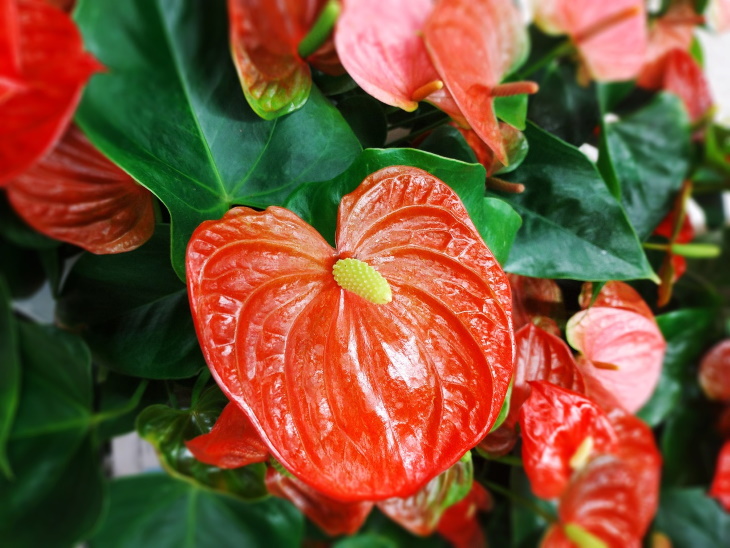
This luxurious houseplant makes a beautiful focal piece for your living room! Its bright red or pink flowers instantly become the center of all attention.
The peculiar heart-shaped flowers of the Anthurium last over eight weeks. They’ve also earned the plant its alternative name - Flamingo Flower. Once the anthurium stops blooming, you can move the plant to a different location, but many people actually enjoy the large and glossy leaves of the anthurium.
Anthuriums make great beginner plants because they are very vocal about their watering needs; when the plant is thirsty, its leaves will droop. But don’t worry - they will perk up after watering right away. Last but not least, make sure that your living room receives bright indirect light throughout the day - ample sunlight is important for this plant to thrive.
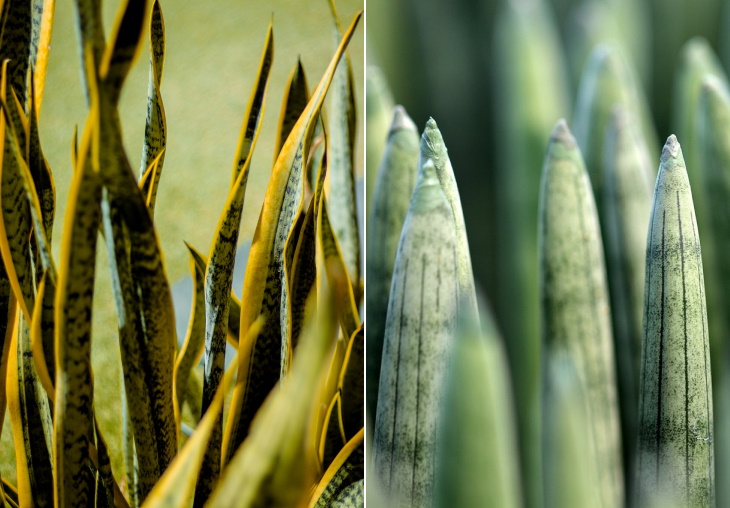
This plant’s thick fleshy leaves grow upright, establishing a solid vertical presence that lends itself beautifully to a living room environment. Place this plant in a corner or near large pieces of furniture - it will readily fill up any free space.
The fun part about snake plants is that they come in so many shapes and colors. Some have leaves that are striped and flat, and others are dark green and grow as cylindrical spikes. We recommend that you purchase a bigger snake plant right away if your intention is to place it on the living room floor. Even though snake plants can become up to six feet tall, they grow very slowly.
Since snake plants are succulents, they have very low water needs. Unlike most cacti and succulents, however, snake plants grow well in low-light conditions too. This means you can grow this plant in the corner and feel confident that it will not perish there.
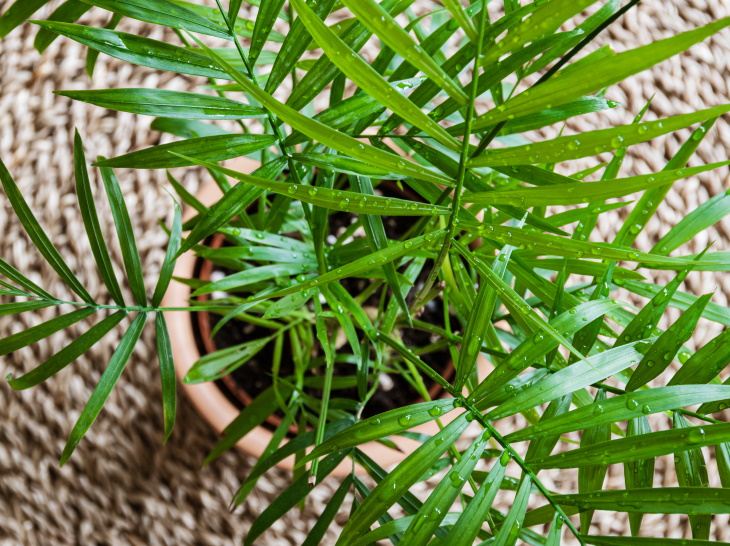
Even experienced plant owners are sometimes wary of growing palm trees. The tropical aesthetic is certainly appealing and trendy, but many palms simply don’t survive for more than a few months in low light and humidity.
Enter the parlor palm. As its name suggests, this is one of the few palms that can be easily grown indoors.
If you can provide your parlor palm with bright light and high humidity, then great. Your plant will love you for it! But even if you don’t have the perfect conditions in your living room, this palm will tolerate it. Watering is easy too. Just wait for the topsoil to become dry halfway, and then water.
Related Article: 10 Pretty Houseplants That Are Nearly Impossible to Kill
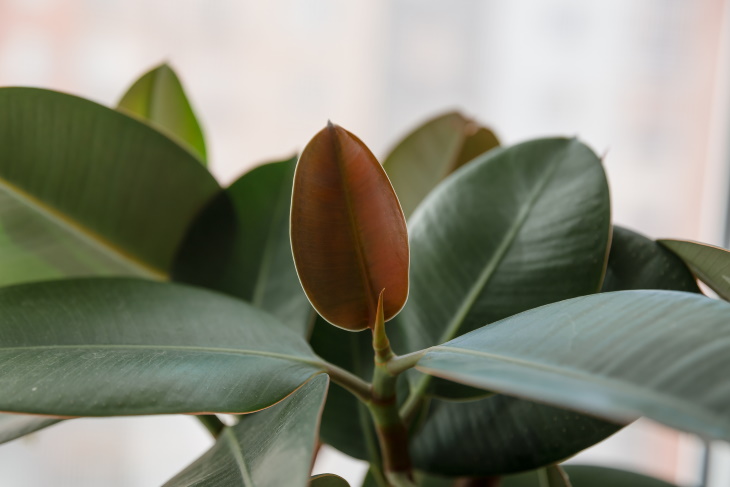
You can’t go wrong with a tall and luxurious tree in the living room. A trendy plant that will surely bring interest to your interior is the rubber fig plant. Ficus trees can grow quite tall - easily over six feet in height or more.
The big glossy leaves of the rubber tree range from a deep green to a dark plum color. Wipe down the leaves regularly with a damp cloth to keep them glossy and help the plant photosynthesize indoors.
Most rubber trees prefer to be in the sun, but the red rubber tree is more tolerant to low-light conditions. But if you want your rubber tree to start growing faster, move it close to a south-facing window - even if only temporarily. When happy in its current location, the tree will grow quite fast - 24 inches (60 cm) or more in a single growing season - so repotting it every 1-2 years is a must.
Related Article: 10 Indoor Plants That Thrive in Small Spaces
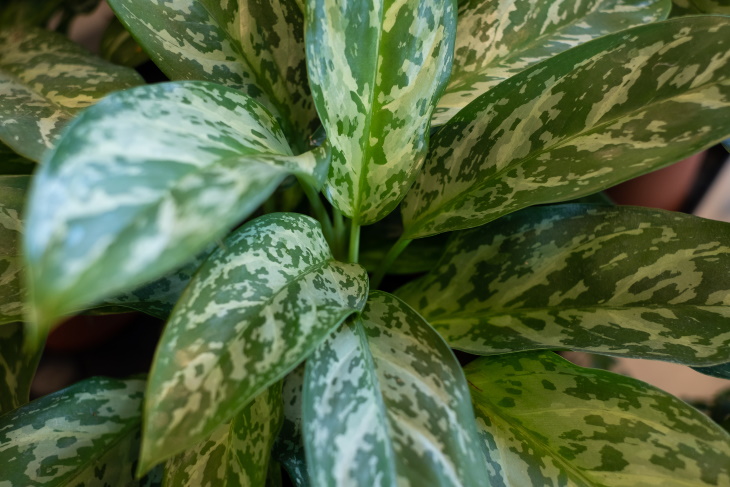
Love calatheas but can’t give these tropical beauties enough humidity indoors? Then let us suggest the Chinese evergreen - a whole group of plants that have beautiful leaf patterns similar to calatheas, but don’t share the Calathea's fussiness and fragility.
Some aglaonemas are white and green, whereas others are naturally pink, red, or even silver. The leaf shape and size vary depending on the kind of aglaonema you purchase, but all of them have a full crown of leaves that can look beautiful either on the floor or on a side table.
All aglaonemas, particularly the green and silver varieties, can easily withstand low-light conditions, and they’re not particularly fussy in terms of watering either. Just make sure to fertilize your aglaonema during the growing season. This way, the plant will continue putting out plenty of new leaves and retain fullness.
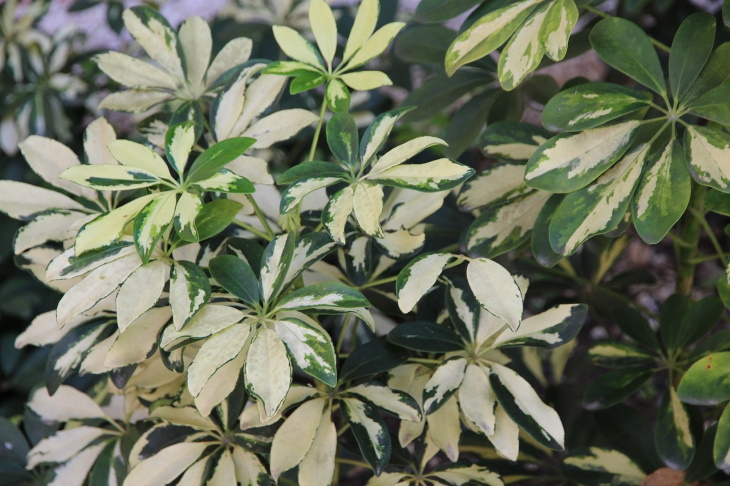
The Schefflera is somewhat reminiscent of the trite money tree, but it’s much fuller and has a more interesting leaf structure. This is a smaller tree that rarely grows beyond 3-4 feet in height, so it will look equally beautiful on a table and on the floor.
The petioles of the Schefflera remind me of clover, but with more and glossier leaves. For this unusual growing habit, the Schefflera is commonly known as the umbrella tree. The leaf color can be either dark green or have yellow marbling. Variegated Schefflera look really special, and there’s rarely a price jump between the green and the variegated version.
Probably the biggest advantage of the Schefflera is the plant’s easy-going - or should I say “easy-growing” - nature. The tree can adapt to a variety of lighting conditions and doesn’t mind if you forget to water it and the soil dries out completely.

If you’re unsure if a palm tree will survive in your climate, we recommend going for a dracaena. Even though these plants are originally from the desert, they have that jungle vibe that’s so popular these days. With tall twisted stems and a spiky crown, the dragon tree will become a great addition to any living room. Just place it somewhere in the corner and enjoy the tropical atmosphere.
Also known as the dragon tree, a dracaena can grow up to six feet tall, with its long spiky leaves concentrated at the top. The long leaves can either be green or variegated.
Plant growers also find dragon trees to be rather low-maintenance. It will grow the fastest in bright indirect light, but it can also tolerate low light. Since this plant is originally from the desert, it doesn’t need to be watered more than twice a month. Wait for the soil to dry out completely before giving your dracaena more water.
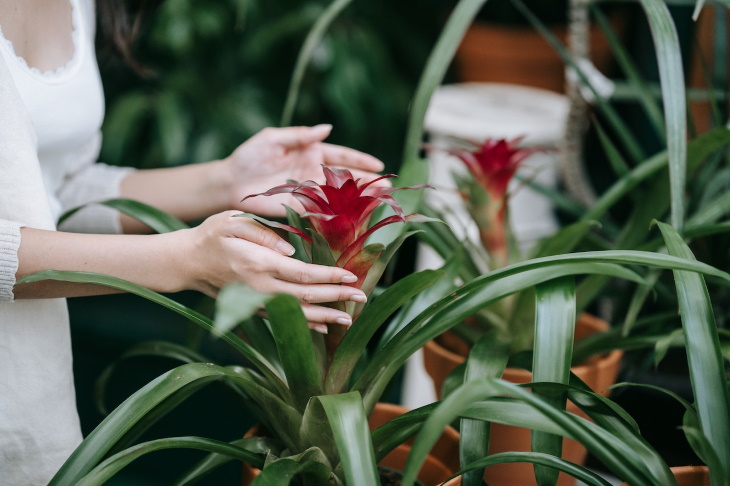
The bromeliad is a spectacular-looking plant that comes from South America. These houseplants are famous for their brightly-colored and intricate blooms that will look gorgeous on the living room table. Some bromeliads also have striped and colorful foliage.
In nature, bromeliads are epiphytic - meaning they grow by clinging to trees and require no soil. This means that the plant is best grown in indirect light. At the center of the plant, you’ll find a kind of funnel. In nature, this is where it collects rainwater to sustain itself. Add a little water into this funnel no more than once every 2-3 weeks to water your plant. Rinse the funnel before watering.
The catch with bromeliads is that they only flower once. To get your bromeliad to bloom, you’ll need to give it ethylene gas. This can be done at home by covering the plant in a tightly-sealed, clear plastic bag with a ripe apple. Leave this “hood” on for up to 10 days, and your bromeliad should grow a flower spike. After blooming, cut the flower spike at the base. After flowering, bromeliads will produce pups. Root them in a separate pot, and you’ll have another young bromeliad.
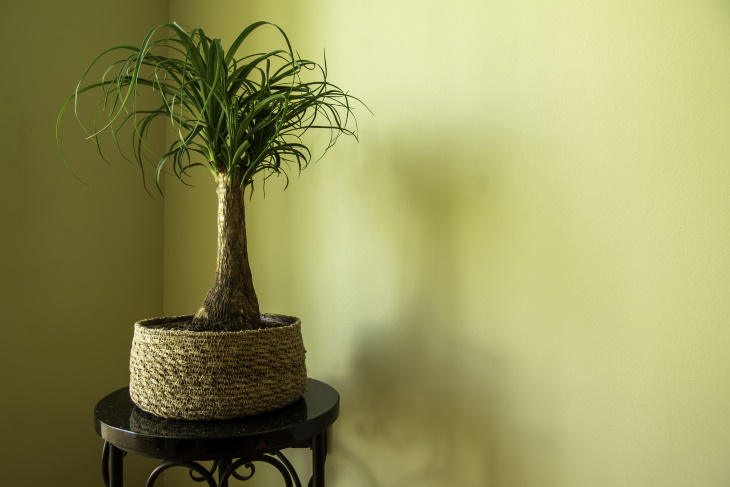
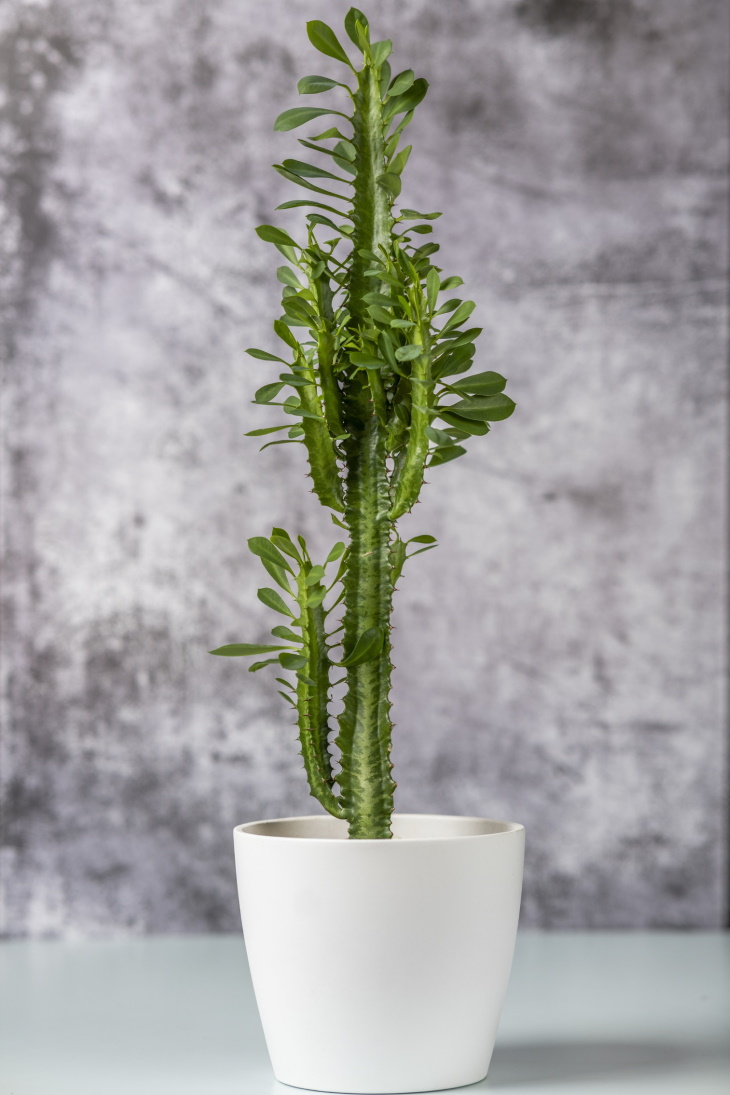
The majority of cacti and succulents will not survive in dappled light for a long time. Fortunately, the candelabra cactus is unlike most succulents, and it can comfortably live in partial shade and grow to the ceiling too! Place it wherever you need a tall vertical element - like a corner, near a bookcase, or crowded among other, bushier plants.
Despite its common name, Euphorbia trigona is a succulent and not a cactus. The plant has a tall triangular stem. Each ridge is dotted with soft thorns and tiny cute leaves at the top. Some cultivars are fully green whereas others have a purplish hue.
In their natural environment in central Africa, these plants drop 1-2 feet during the growing season. For their vigorous growth, these plants are sometimes used as hedges in their natural climate. Indoors, the growth is less rapid but still visible. The plant is extremely easy to care for, as it requires little water - just like most succulents.
Note: You won’t find run-of-the-mill plants like pothos, ZZ plants, and monsteras on the list. Whilst they’re all excellent choices for the living room, everyone already either knows about them or owns them.
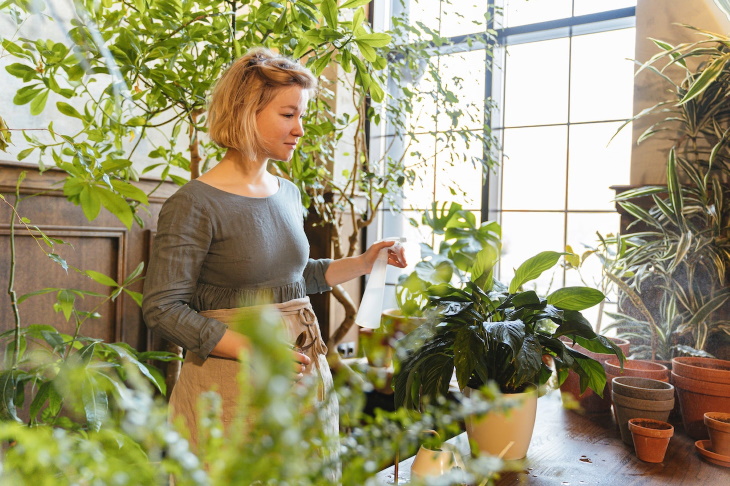
Throughout the article, you can find styling tips sprinkled between the paragraphs. Thirsty for more? Here are a few extra:
To get that modern look and have fun curating your plants, try combining plants in groups across the room. A few plants on the bookshelf, a few more in the corner, and one last statement plant on the table. Counterintuitively, grouping also makes it look like you have MORE houseplants while maintaining an overall organized appearance in the room.
Combining tall plants with smaller ones, fuller plants with trees, etc. can add depth and texture to your living room. Layering also helps draw attention away from more unsightly corners of the living room (e.g. electrical cords) to your beautiful plants.
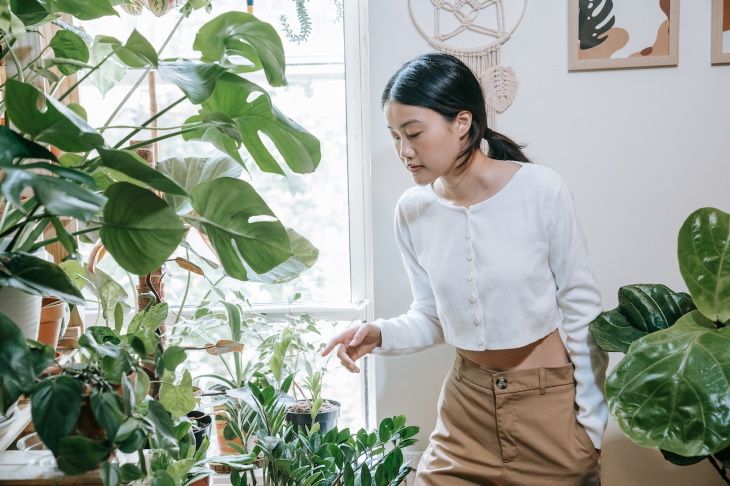
If your furniture and textiles are neutral in color, you can add a splash of color by placing a bright red anthurium on the table, or a pink bromeliad on the shelf. You can even rotate your plants as they bloom and use them instead of a bouquet of flowers. Alternatively, you can match up the colors of your houseplants and their pots with the colors you have in your living room.
Adding a big ficus tree or a tall snake plant next to your couch or shelves may seem like a big risk. However, most living rooms already have big furniture in them, so it’s actually smaller plants that can be more difficult to style. The lesson here is - don’t be afraid of big plants. They’re more established, which means that they have a better chance of survival in a new space too.
Any tall or trailing plant will look fabulous in the corner. Snake plants, candelabra cacti, parlor palms, ZZ plants, and red rubber trees are all safe choices. Working with trailing plants like pothos or ivy is a bit trickier because you’ll need to hang it on a ceiling hook or place it on a high shelf. But if you’re tempted and ready to put in the extra work, go for it. The sculptural waterfall of foliage looks indescribably beautiful in a corner!
References: Bloomscape, CountryLiving, Architectural Design, RD.com